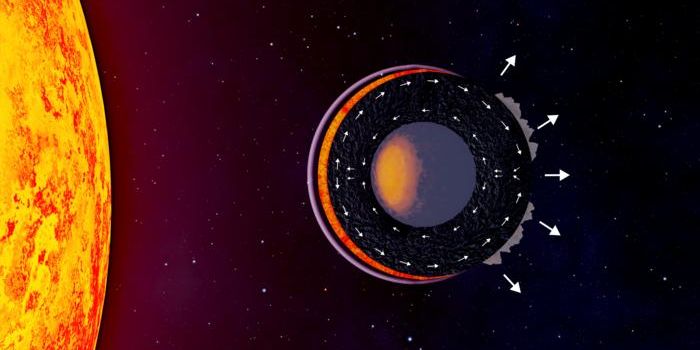Astronomers Spot Two Previously Invisible Supermassive Black Holes
Observing the heavens is not easy; the universe is vast, and the bigger we build our space observation equipment, the bigger we realize it still yet needs to be. That said, even today’s modern space telescopes can’t see to the outer rims of the universe, and many parts of the universe are clouded by dust and debris.
The fact that dust and debris are everywhere in our universe is an important fact, because it means it gets in the way of things that we seek to observe. Another problem, is that the light needs to be facing us for us to be able to see it, and it isn’t always doing so.
One such example of this was a recent announcement by NASA that two supermassive black holes at the centers of IC 3639 and NGC 1448 were discovered, after previously being invisible because they were shrouded by clouds of space dust and because the light wasn’t facing towards us. Instead, we noticed it because the light was being reflected back, thanks to the debris.
Image Credit: Carnegie-Irvine Galaxy Survey/NASA/JPL-Caltech
IC 3639 is estimated to be around 170 million light years away, while the much closer NGC 1448 is only about 38 million light years away.
At times, these supermassive black holes find something to feast on, pulled in from their massive gravitational pull. When it gets absorbed, these incredible acts of nature expel luminous X-rays, which can be observed by NuSTAR (Nuclear Spectroscopic Telescope Array).
Fortunately, that’s exactly what happened. These supermassive black holes were shrouded in darkness for so long until they finally spoke up with their luminous X-rays. NuSTAR captured these light bursts, and as a result, scientists now know of their existence.
"These black holes are relatively close to the Milky Way, but they have remained hidden from us until now," said Ady Annuar, a graduate student at Durham University in the United Kingdom, who presented the results at the American Astronomical Society meeting in Grapevine, Texas. "They're like monsters hiding under your bed."
The black holes at the centers of these galaxies are at the epicenter of some of the most active galactic nuclei, which are essentially luminous objects in space that are such because of all the bright objects contained within, such as blazars and quasars, among other things.
Adding to the reasoning behind their luminosity is the fact that the supermassive black hole is always absorbing matter, which heats up as gravity forces it to collapse on itself. Without all this light, the black holes would have remained invisible. This is the sole reason we think there are so many more black holes out there than we have currently estimated.
"Just as we can't see the sun on a cloudy day, we can't directly see how bright these active galactic nuclei really are because of all of the gas and dust surrounding the central engine," said Peter Boorman, a graduate student at the University of Southampton in the United Kingdom.
Considering the fact that supermassive black holes are probably way more common than we think, it’s important to recognize these signs that can help us to learn about their presence, even when they’re shrouded and completely hidden by the materials of space itself.
By learning how to better spot these kinds of forces of nature, we can better locate the supermassive black holes that are closest to the Milky Way.
Source: NASA









